Poisonous Insects
Treatment for bites and stings varies greatly depending on what caused the symptoms. Therefore, it is always important to call the Poison Center for specific treatment.
- If the person is not breathing, start artificial respiration and call 911.
- Move the person to a safe area away from additional harm.
- Identify what caused the bite or sting and when this occurred.
- Identify symptoms the person is having.
Then call the Poison Center at 1-800-222-1222. The poison specialist can determine if further treatment is needed.
The following are types of Poisonous Insects found in Alabama:
| Bumble Bee Not as denfensive or numerous as honey bees. Nest may be found in old bird nest or abandoned rodent burrows, clumps of grass, old mattresses, car cushions or in abandoned buildings. |
 |
| Honey Bee Responsible for most human stings. Nest or hives may be found in hollow trees or logs, attics, or wall voids. |
 |
| Sweat Bee Attracted to perspiration. Nest in the bare soil by digging burrows. |
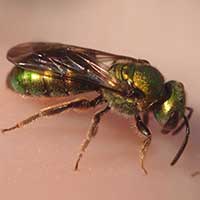 |
| Black Widow Red, orange, or yellow colored hourglass shape is on the underside of the abdomen; Webs are usually spun in quiet dark undisturbed areas such as woodpiles, under rocks, or around houses. They can also dwell in barns, garages, cellars, storage sheds, rain spouts, crawl spaces, in electrical, gas, and water boxes, plus under park benches. |
 |
| Brown Recluse Is found throughout Alabama, but most common in the northern part of the state. It has a violin-shaped (or fiddle) mark on the backside of the cephalothorax. Usually found indoors in basements and closets. They may hide in boxes, clothing, folded bedding, under furniture and areas that are warm and dry. |
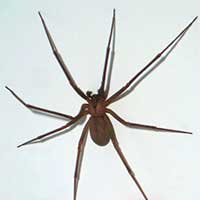 |
| Cow Ant/Red Velvet Ant These are wasps that move along the ground. The female is wingless. Found in lawns and pastures. |
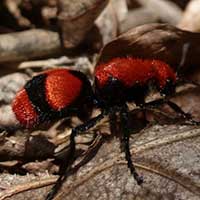 |
| Dirt Dauber These are wasps that make their homes from mud under overhangs and eaves of buildings. Also called mud daubers and dirt dobbers. |
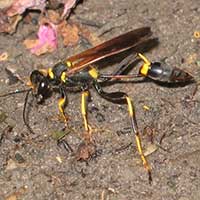 |
| Fire Ant Fire ants actually sting, not bite. Build large mounds in yards and pastures. |
 |
| Hornet Largest wasp. Builds large papery nest in hollow trees, on walls, or in attics. |
 |
| Saddleback Caterpillar Have poisonous spines, once brushed upon result in stinging, burning sensation, swelling and other symptoms. May be found in trees - apple, basswood, cherry, dogwood, elm, maple, oak plum - shrubs and corn. Most common in the late summer and autumn. |
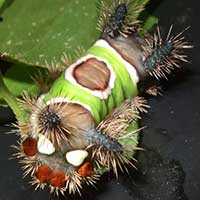 |
| Scorpion Sting with their tail. Scorpion are active at night. Live in mixed hardwood and pine forests and in rocky areas around ponds and lakes. Scorpions are sometimes found in houses in dark moist places. |
 |
| Wasp/Yellow Jacket Common wasp that makes a smaller, papery nest. Constructs nest in trees, shrubs, recessed structures, and some are ground nesters. |
 |
Photos used courtesy of the Birmingham Zoo










